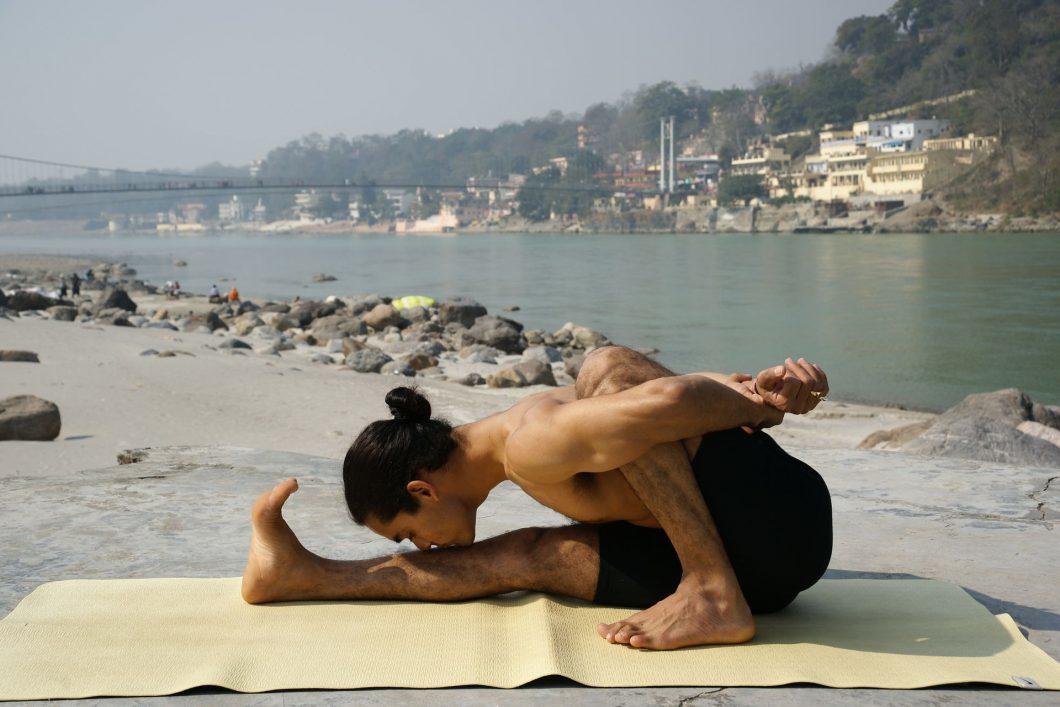Dynamic yoga
Harbhajan Singh Khalsa Yogi Ji was a yoga teacher, more precisely kundalini yoga.
He taught how to practice yoga in the United States in the 1960's and 1970's when the hippie wave was in full swing.
In this article we describe a variant of yoga that is all the rage in every yoga school: dynamic yoga.
Dynamic Yoga: definition and particularities
In our latitudes, yoga is considered as a form of gymnastics that allows, through regular practice, to become aware of one's body and to regain self-confidence.
It is a philosophy of life, a practice that soothes the body and mind. While it is an ancestral discipline in India, it is a rather young discipline in the West.
Spiritual, moral and ascetic discipline stemming from Buddhist culture, Yoga is - one could say - "as old as the world": stemming from the highest Hindu antiquity, the practice of Yoga has evolved to be declined today in multiple variations.
Whether it is indeed hatha yoga, nidra yoga, kundalini yoga, vinyasa yoga, ashtanga yoga, etc., yoga is very popular in the West because at each session, the yoga postures allow many benefits on an emotional, physical and mental level.
The benefits of yoga have been proven:
• Muscle strengthening,
• Breathing exercises,
• To relax,
• Stretching and stretching, toning muscles,
• Improve your physical condition,
• Find inner peace and better fight against stress,
• Exercise to recover positive thinking, etc.
Dynamic yoga is difficult to define.For it is less a form of yoga as such than a way of practicing yoga.
There are four variations of dynamic yoga:
• Yoga Vinyasa and Ashtanga, founded by Sri Krishna Pattabhi Jois (1915-2009),
• Dynamic yoga, created by Godfrey Devereux,
• Power yoga, established by Baron Baptiste.
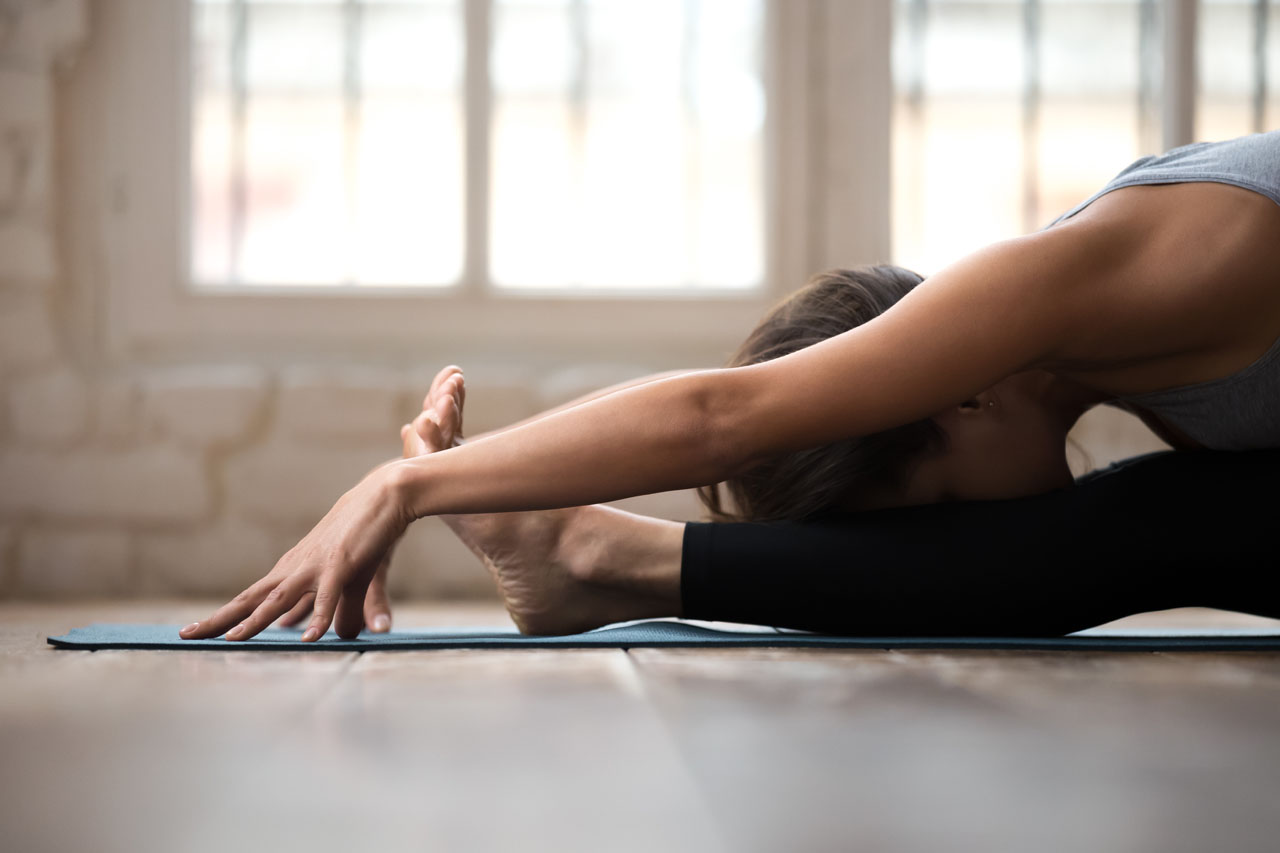
Each type of dynamic yoga is responsible for its school of yoga and its founder. Okay, but that doesn't tell us what it is.
What is called dynamic yoga differs from hatha yoga, traditional yoga, in that it invites you to perform a series of fluid yoga postures at a fast and athletic pace, maintaining deep and slow breathing.
The sequences are rhythmed by the breathing and the mind of the practitioner. Moreover, in Sanskrit, vinyasa means "synchronized system of movements and breathing".
It is a yoga that is a little more athletic than the others, and that is why it has become the most widespread in Western countries: because it maintains physical and mental fitness like any other sport activity.
It is therefore practiced through yoga postures (called "asanas") which are themselves allowed by the Ujjayi breath, or "victorious breath", a technique that consists in regaining control of our breathing and our thoughts.
This involves working on the breath ("pranayama") simultaneously with the movements ("asanas").
In the traditional Ashtanga Yoga method, the yogi must follow eight fundamental practices:
• The rules of behavior ("niyamas" in Sanskrit),
• Self-discipline ("yamas"),
• The postural scheme of the body ("asanas"),
• Breathing ("pranayama"),
• Mastery of the senses ("pratyahara"),
• Concentration ("dharana"),
• Meditation ("dhyana"),
• Enlightenment ("samadhi").
Even to begin yoga, it is possible to practice ashtanga yoga every day, without a yoga teacher: it is recommended to do one's yoga session in the morning, when the mind is not yet invaded by the concerns of the day (work, stress management, various turpitudes).

A regular and daily practice of the same series of exercises will free your rib cage, make your muscles more flexible and improve your physical condition.
After the warm-up, the salutation to the sun and the postures of the series, you will have to stretch, then the teacher will probably invite you to pronounce the "namasté": it is a "mudra" allowing you to salute the part of divinity existing in each human being.
We therefore learn how to sheath, build muscles, soothe the body and align the spine at the base of the head, etc.
While ashtanga yoga emphasizes the gaze and breathing, vinyasa yoga appears less codified - there is no predefined model for the series of exercises - to which must be added "power yoga", which emphasizes the elimination of toxins through physical exercise.
In the latter, it is therefore similar to the fitness class in the gym.
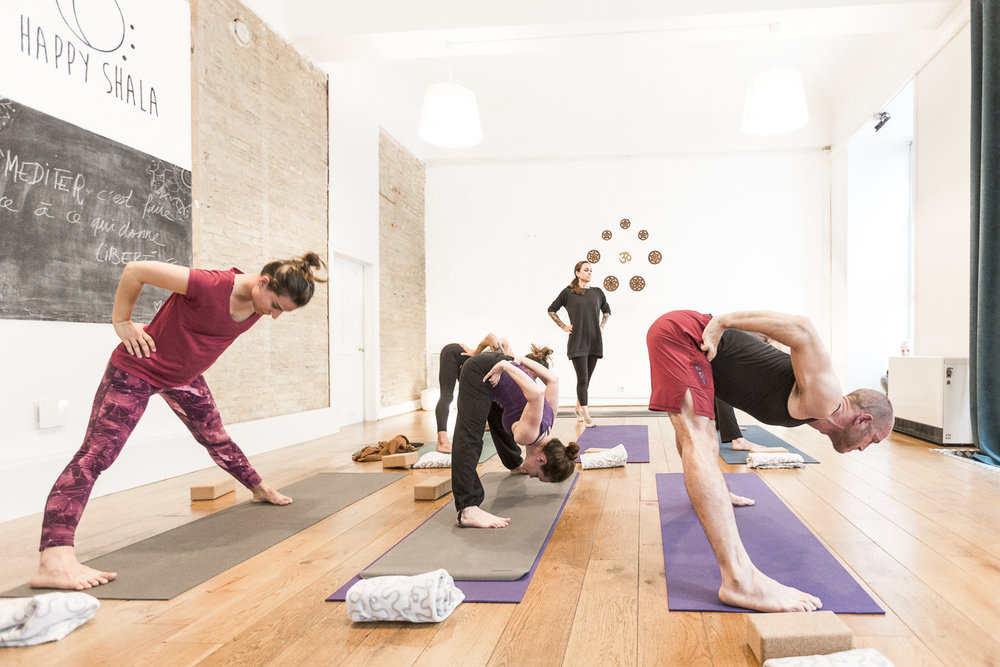
Vinyasa Ashtanga Yoga
This variant brings together two schools of yoga that were created under the aegis of Sri Krishna Pattabhi Jois (1915-2009).
This variant of yoga consists of a series of non-fixed movements, during which dynamic sequences of postures are performed. The origin of this yoga is uncertain.
According to one theory, Sri Krishna Pattabhi Jois developed Ashtanga Vinyasa yoga from a manuscript - entitled "Yoga Korunta" - found in the library of Mysore (South India).
A second hypothesis suggests that the book was taught orally by a guru named Moha Brahmachari, who transmitted it to Krishnamacharia, and finally given to Patthabhi Jois.
The text described a series of six postures - the asanas - based on breathing and body movements.
Patthabhi Jois, then a student of Krishnamacharia, would have adapted this teaching to a more tonic, dynamic kind of postural yoga for young people.
Patthabhi Jois taught his style of yoga - ashtanga binyasa yoage - until his death in 2009, at the age of 93: as such, he was the architect of the expansion of dynamic yoga throughout the world.
Other contemporary students have moved somewhat away from the purely traditional teaching of the six Ashtanga Yoga series, resulting in Vinyasa Yoga: a practice more focused on fluidity of movement.
The eight yoga postures described in the book Yoga-Sutra must be followed in order and reinforce each other.
The postures reinforce the yamas (which are ethics) and the niyamas (self-purification and study), to advance the asanas (postures).
The practice of the postures by the student therefore focuses on concentration, body movements in space and the circulation of air in the respiratory system.
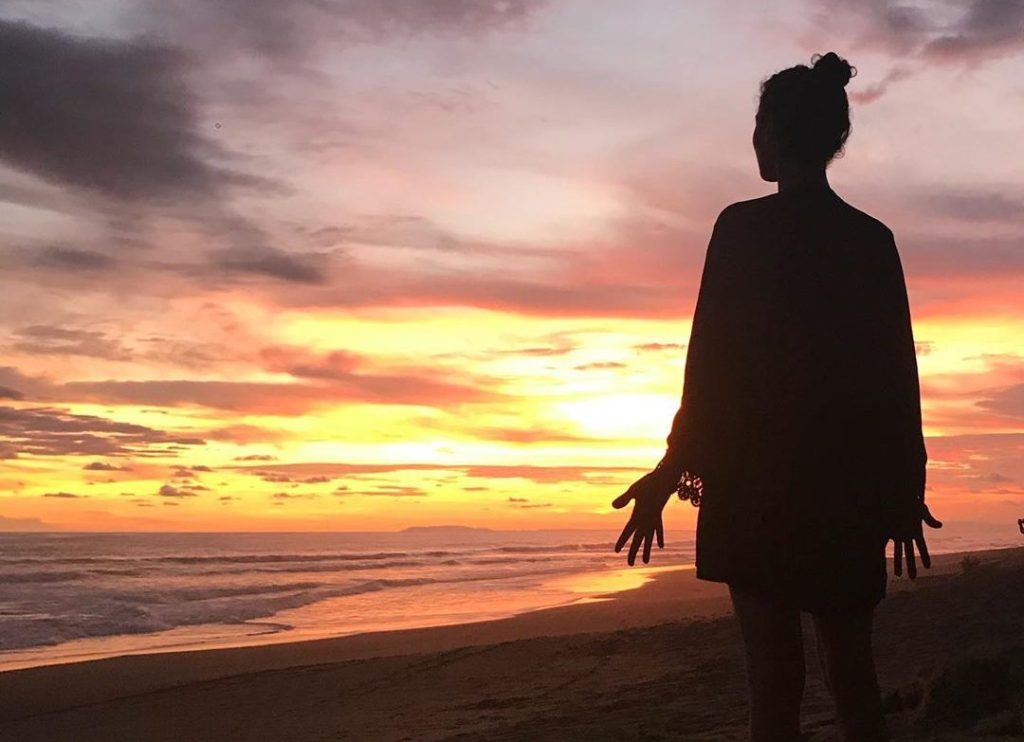
The postures - such as the sun salutation - must be fluid and fast (hence the term "dynamic"), and take place over six series of exercises:
• The primary series, "yoga Chikitsa": yoga therapy, detoxification, alignment,
• The intermediate series, "Nadi Shodana": purification of the nervous system,
• Four advanced series A, B, C and D, "Sthira Bhaga": divine stability.
The series consists of about fifty postures in total, performed according to the same sequences.
The important thing to remember is that each student progresses at his or her own pace, despite the complex codification of the postural execution process.
Indeed, if each series begins with sun salutations and standing exercises, the teacher can adapt the series according to the student's physical condition.
He can add movements, simplify or remove some if they are too complicated for the student to follow.
Power yoga
Power Yoga was developed by Beryl Birch Bendere (b. 1942), an American yoga teacher.
She is recognized as the founder of Power Yoga in the 1980's, a modern variant of dynamic yoga.
Inspired by Ashtanga yoga, Power yoga has three particularities:
• A dynamic sequence of postures,
• A great rigour in the execution of the movements,
• Practical in a heated room.
This variation would have been born from the desire to create a more fun yoga than traditional Ashtanga yoga, less structured and less rigid.
This form of practice is inspired by three schools: Ashtanga, Bikram yoga and Iyengar yoga.
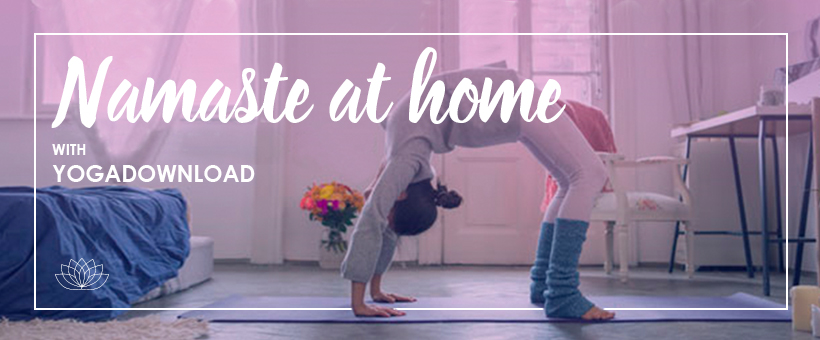
The teacher selects different postures from many series, making each session different. This also allows the teacher to shape the exercises according to the energy of the students.
A Power Yoga session often takes place in five steps:
• Relaxation: posture of the child or the small folded sheet,
• Sun salutation and Ujjayi breathing,
• Variable Power Yoga postures, different for each session,
• Relaxation and Shavasana: Lying on your back on the yoga mat, you relax every part of your body,
• Chanting of the mantra "Om" between the teacher and the students.
The practice of Power Yoga helps to relieve stress and focus on the present moment.
The discipline also improves breathing and sleep, joint flexibility. It tones the body, restores balance, endurance and self-confidence.
Finally, Power Yoga helps to build muscles and refine your figure: it is therefore a sport to be practiced if you would like to lose weight or gain flexibility (or both at the same time).
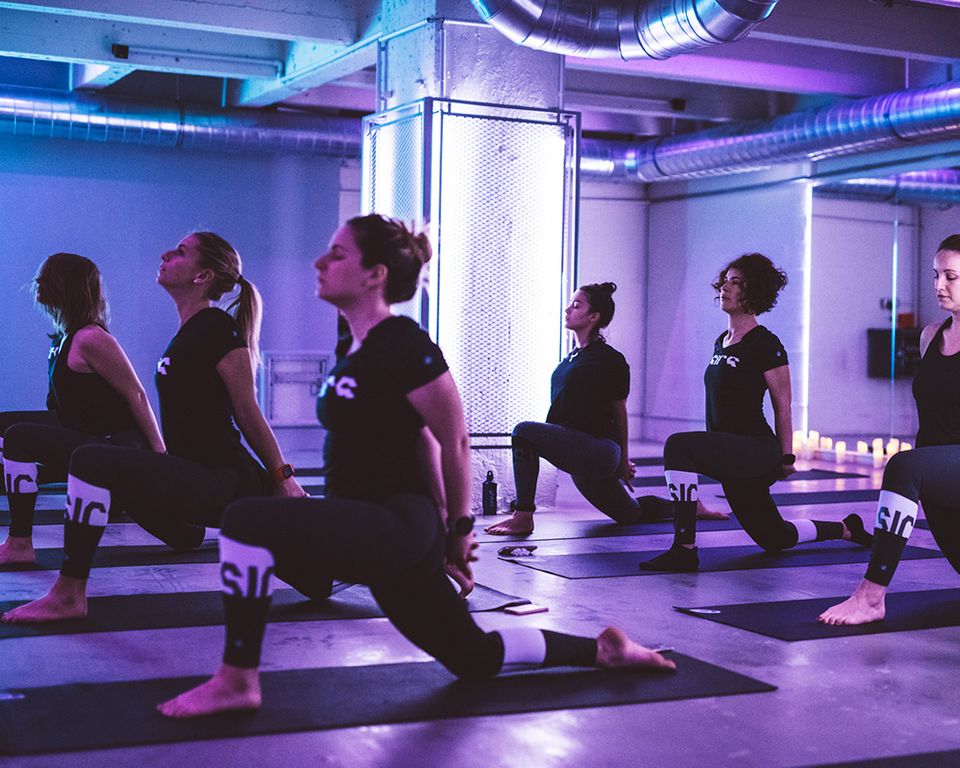
The benefits of dynamic yoga
What is the interest for my sport practice to privilege dynamic yoga rather than traditional yoga? How can I open my chakra, or improve my karma?
Ashtanga vinyasa yoga and power yoga were both born under the impetus of Sri K. Pattabhi Jois (1915-2009), yoga teacher and student of the founder of modern yoga, Tirumalai Krishnamacharya (1888-1989).
Linking physical and sports postures will first of all contribute to develop endurance, mental and physical strength, but also a whole host of benefits:
• Gain in flexibility and tonicity,
• Muscle the deep muscles (lower back, abdominal, gluteal, dorsal, lumbar, etc.),
• Learn how to breathe better through breath work and cardio exercise,
• To deepen one's self-knowledge,
• Decrease your ability to concentrate, to refocus on self-awareness and body awareness,
• To have a better stress management, to ease tensions, to evacuate fears and multiple fears,
• To help you let go through relaxation techniques and feel better,
• Tend towards the state of full consciousness to calm down, to calm down, to cure a mental disorder,
• Lower blood pressure, etc.
This list is nevertheless incomplete because doing dynamic yoga will affect physical abilities. The yoga posture is not self-evident and places our body in an often unusual postural disposition.
To sculpt your figure, harmonize blood circulation and slow down your heart rate, dynamic yoga is a very good workout.
Practitioners of "power yoga" will increase the evacuation of toxins through sweat, burn calories quickly, more easily lose weight and gain muscle mass.
Dynamic yoga exercises will cause an increase in internal body temperature, related to perspiration.
From then on, the body filters the good elements from the bad: it carries out glycolysis (glucose metabolism), builds muscle and eliminates toxins from the blood and muscle tissue.
By stimulating breathing and physical and mental strength, doing sports and dynamic yoga helps strengthen the immune system, which is essential to limit the risk of contracting serious diseases.
Okay yes, but what are the differences from traditional yoga?
In Ashtanga Yoga, Vinyasa Yoga or Power Yoga, the practitioners will stay less time in a posture than in a discipline such as Kundalini Yoga or Iyengar Yoga for example: there is a determined number of breaths and the sequence is faster.
This type of yoga is therefore more dynamic, we practice the sun salutation, for example, much faster than in a "classic" warm-up.


